Wind energy lifting and transport: flying high
16 March 2021
As the technology behind generating electricity from the wind evolves, so too do the equipment and techniques used for lifting and transporting the wind turbine components. The growth of the wind sector around the world has helped generate new sources of income for some lifting and transportation companies in the face of declining oil and gas work. Not all sector developments, however, generate work – with some even threatening to negate it.
Hamburg, Germany-based foundation specialist Anker Foundations, for example, is championing the use of prefabricated construction techniques for the foundations of onshore wind turbines. “We’ve designed the foundation in such a way that we can do without any heavy transport and the foundation is erected within three days,” claims Anker MD and foundation specialist Gregor Prass. “We can reduce construction site transport by up to 70 percent.”
Its foundations are formed of precast elements that can be assembled on site. At the start of 2019, Anker built a foundation for an Enercon E-115 turbine. Since then, it has developed and adapted the foundation to suit systems from over 40 types of wind turbine from manufacturers including Enercon, Nordex, Vestas and SiemensGamesa. It started mass producing foundations at the start of October this year.
The assembly, transportation and load-out of foundations for offshore wind turbine jackets has been the focus of a joint venture between Dutch heavy lift and transportation company Mammoet and Taiwanese heavy lift specialist Giant Heavy Machinery Services. The two companies are working with Sing Da Marine Structure Corporation, a marine engineering subsidiary of China Steel Corporation, to provide assembly, transportation and load-out services for Taiwan’s first locally fabricated wind turbine jacket foundations on site at Sing Da Marine Structure Corporation’s manufacturing facility at Sing Da Port.
The Mammoet-Giant JV will perform the assembly, transportation and load-out of the jackets, which each weigh approximately 1,200 tonnes. For this Mammoet will use its PTC200-DS Ring Crane to assemble the jackets by first upending the lower jacket structure before installing both the upper structure and transition pieces at a single location. 72 axle lines of SPMT will then transport each jacket up to 1,200 metres from the jacket fabrication line to a storage area.
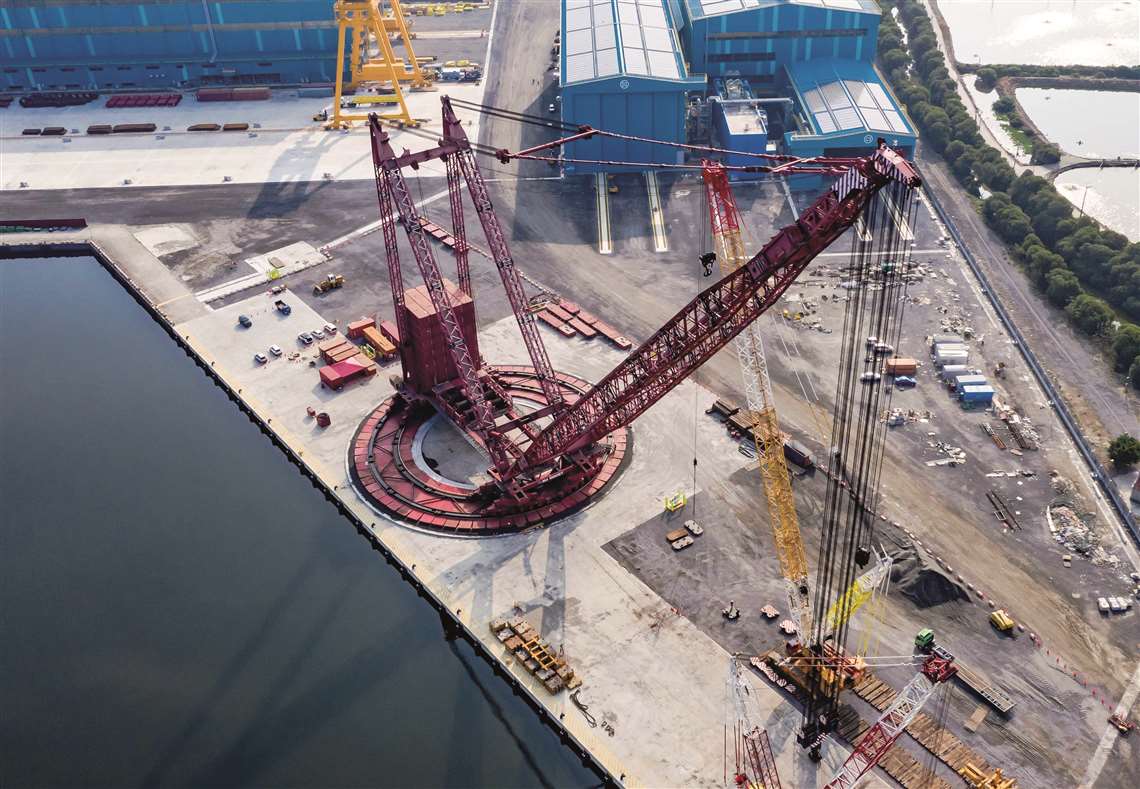 Mammoet’s PTC200-DS ring crane at Sing Da Port, Taiwan
Mammoet’s PTC200-DS ring crane at Sing Da Port, Taiwan
Four jackets are expected to be simultaneously assembled near the PTC200-DS Ring Crane while the crane will also complete multiple heavy lifts to load-out each jacket onto the barge.
The project is a joint effort between SDMS and renewable energy company Ørsted, with the aim to deliver jacket foundations and knowledge transference to develop Taiwan’s offshore wind supply capacity.
Although Anker champions modularisation as an effective approach for windmill foundation construction, turbine blades still need to be transported and erected whole. And these blades continue to grow in length.
Trailer blazers
Specialized transportation equipment manufacturers have responded to this by developing products designed specifically to move longer blades. Trailer and modular vehicle manufacturer Faymonville, for example, developed the WingMax flatbed semi-trailer to move wind turbine blades longer than 70 metres. It has an hydraulic gooseneck that lifts and lowers by 1,700 mm and pendular axles to enable obstacles such as roundabouts to be negotiated. The steering and suspension are also hydraulic to give the sharpest possible steering angle and maximum stroke for long suspension travel. Versions are available with three or four axles.
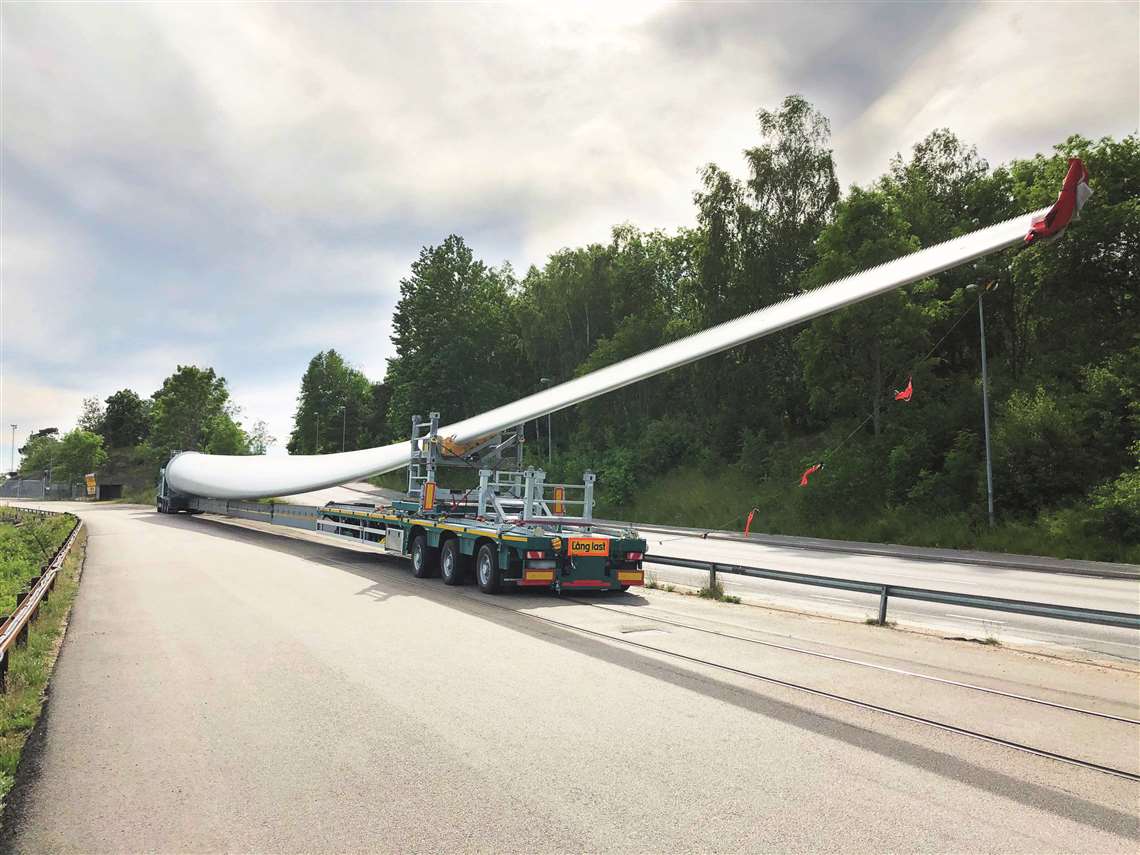 Uddevalla Specialtransporter’s new Faymonville WingMAX flatbed trailer
Uddevalla Specialtransporter’s new Faymonville WingMAX flatbed trailer
Memmingen, Germany-based heavy haul and special transport equipment manufacturer Goldhofer developed the Blade-S which uses the blade as part of the structure, linking the front of the trailer and the rear axles. The blade is carried unsupported between a free-turning device behind the tractor and the trailing dolly. This permits travel speeds of up to 80 km/h and simplifies route planning, says Goldhofer.
An early adopter of the Goldhofer Blade-S with the self-tracking trailing dolly is German crane rental and heavy transportation company Hofmann Kran-Vermietung. On one of its latest jobs, the company used the setup to transport three 75 metre-long wind turbine blades a distance of over 400 km, from Rostock to the Hopsten-Schale wind farm in Germany.
The Tii Group, which includes the Scheuerle and Kamag specialized transport brands, reports a sharp increase in demand for wind turbines in North America. The company says that tax benefits for new wind turbines and ambitious government sourcing goals for electricity from wind energy have given the North American wind energy industry a major boost. Offshore plants are also expected to increasingly contribute to the generation of electricity from renewable sources, it adds. As a result, Goldhofer expects increased demand for its specialist vehicles – particularly its SPMTs (self propelled modular transporter) and modular platform vehicles, which it says are scalable and so can be adapted to accommodate pretty much any load.
An alternative to using specialized trailers or SPMT to move turbine blades at a factory or on a job site is to use rubber-tyred gantry (RTG) cranes. This is an approach advocated by Illinois, USA-headquartered gantry manufacturer Mi-Jack, which manufactures the MJ Series Travelift.
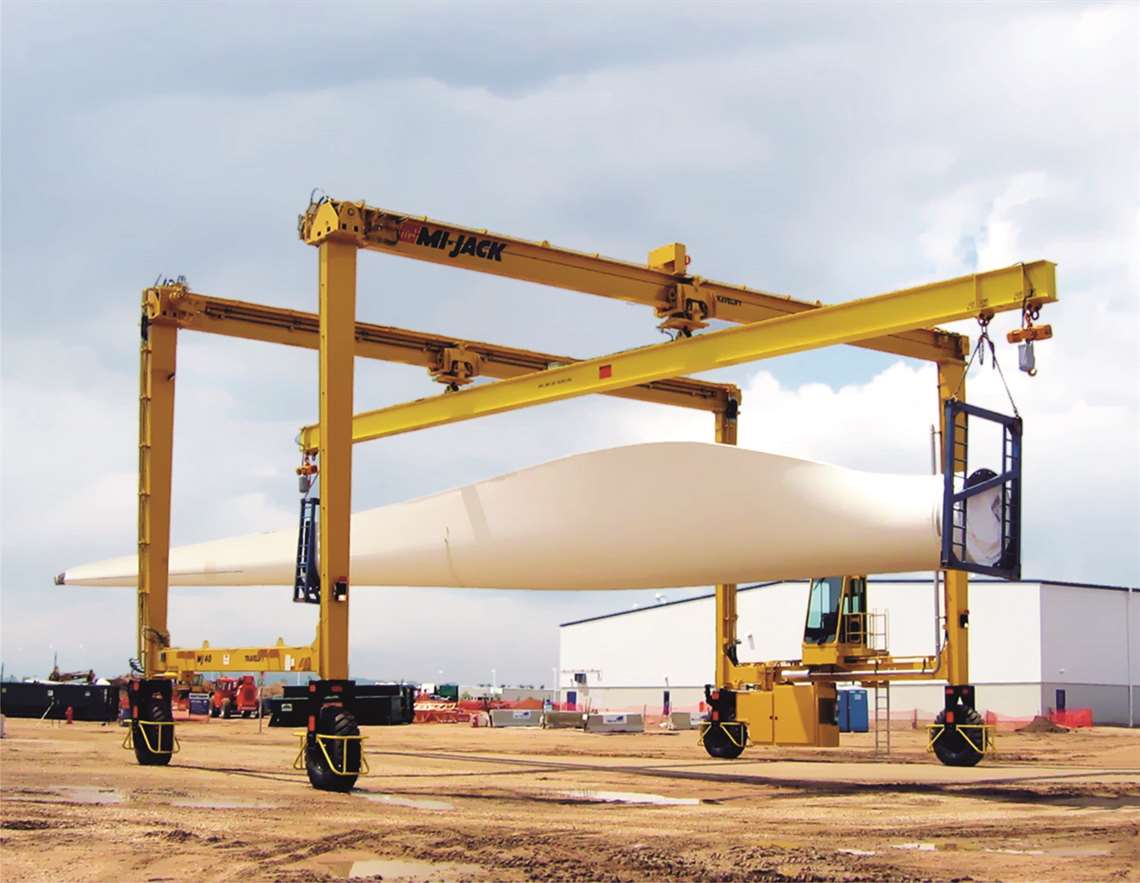 Mi-Jack says its MJ Series Travelift RTGs are a good way to move turbine blades around yards
Mi-Jack says its MJ Series Travelift RTGs are a good way to move turbine blades around yards
Travelifts are well-suited to handling wind turbine parts as they are constructed, stored and loaded for delivery, says Mi-Jack. The MJ30, MJ40, and MJ50 cranes (the number designates their capacity in US tons) are especially popular in the wind industry, it says, although each crane is built with custom dimensions and capacities ranging from 20 to 150 US tons (18 to 136 tonnes).
Mi-Jack has been building and supplying RTG cranes to wind turbine component manufacturers for several decades. In addition to cranes, Mi-Jack also engineers and builds customer spreaders and attachments designed for the handling of difficult wind turbine parts, especially blades.
With turbine blades, the centre of gravity is not in the middle of the blade but is located towards the root end of the blade, so it often requires a custom-engineered solution, Mi-Jack explains.
Mega tower
We now turn to turbine erection and in September heavy lift and transport company Mammoet launched the LTC4000 tower crane, which is primarily intended for installation of onshore wind turbines.
As wind turbines have been getting larger, hub heights are also increasing, with larger and heavier components. Fewer crane options are available as things get bigger. In addition to less choice, these larger cranes are unsuitable for the fast pace of installation required. According to Mammoet, all these factors underpin the reason why it decided to developed the LTC4000.
It has a maximum hook height of 222 metres and can lift to more than 200 metres. Capacity is 200 tonnes and no ties are required to the turbine tower. Lifts can be made at a relatively short working radius of 15 metres, unlike the large crawler cranes currently used. A further benefit over large crawlers, Mammoet says, is that the crane needs a smaller laydown area and is quicker to assemble and dismantle or reconfigure. Read the full report on this crane in the Tower Crane News Special in the September 2020 issue of ICST.
Another large crane for lifting wind farm components is the Skyhook from Dutch crane and technical engineering company Huisman. Said to be the largest slewing jib quayside crane in the world by its manufacturer, the Skyhook lifts 2,600 tonnes at a 30 metre radius. It is designed for minimal track load, to reduce the cost of quayside foundations. It also has an optimised counterweight system and dual main hoist for flexibility in rigging setups.
The Skyhook is now located in Xiamen, China, where it is being used to lift offshore wind farm components. It’s hoisted 100 metre-long foundation monopiles, each weighing 1,700 tonnes, from the deck of a cargo vessel.
Cees van Veluw, cranes product manager at Huisman, said, “With the high ambitions for offshore wind in various parts of the world, we see that more permanent yet more flexible lifting solutions are key to further efficiency gains in the logistics chain.
“The capacity of the Skyhook matches the foundation sizes we see in the near future... With new marshalling ports being developed worldwide, we see that the Skyhook can contribute to further optimising the logistics of offshore wind turbines and foundations.”
Servicing specialists
Once wind turbines have been erected they require regular maintenance and servicing. This has led to the development of specialist up-tower cranes specifically designed for service applications, such as the RotorHook crane. Canadian specialized wind energy contractor LiftWerx, part of the Meemaken Group – an owner of several companies providing services to the offshore energy industry, has added a new RotorHook crane to its fleet. It will expand the company’s capabilities to be able to perform drivetrain exchanges, rotor drops, and main bearing exchanges on all General Electric 1.X turbine models. RotorHook cranes are zero-emission cranes and rated at a maximum lifting capacity of 75 tonnes. Delivery of the crane is scheduled for April 2021.
The new crane comes following the signing of a contract between LiftWerx and offshore lifting and hoisting systems specialist Kenz Figee Group, which also became part of the Meemaken Group in 2016.
USA heavy lift and transportation company Barnhart has just patented a device to help with wind turbine maintenance. Barnhart’s device, and associated method, is used for changing wind turbine blade pitch bearings without having to move the entire rotor to the ground. It does not require rotation of the unbalanced rotor once the blade is removed and allows more efficient use of cranes to replace the bearing, Barnhart says. Plus it provides a platform for moving the old and new bearings to and from the rotor, and for enabling convenient access to all tools necessary to perform such work.
Switzerland-headquartered construction equipment manufacturer Liebherr has developed an update for its LR 1500 500 tonne capacity lattice boom crawler crane. Working with Cologne, Germany-based crane and heavy haulage firm HKV Schmitz + Partner, which has one in its fleet, service work can now be completed on turbines with a hub height of up to 145 metres.
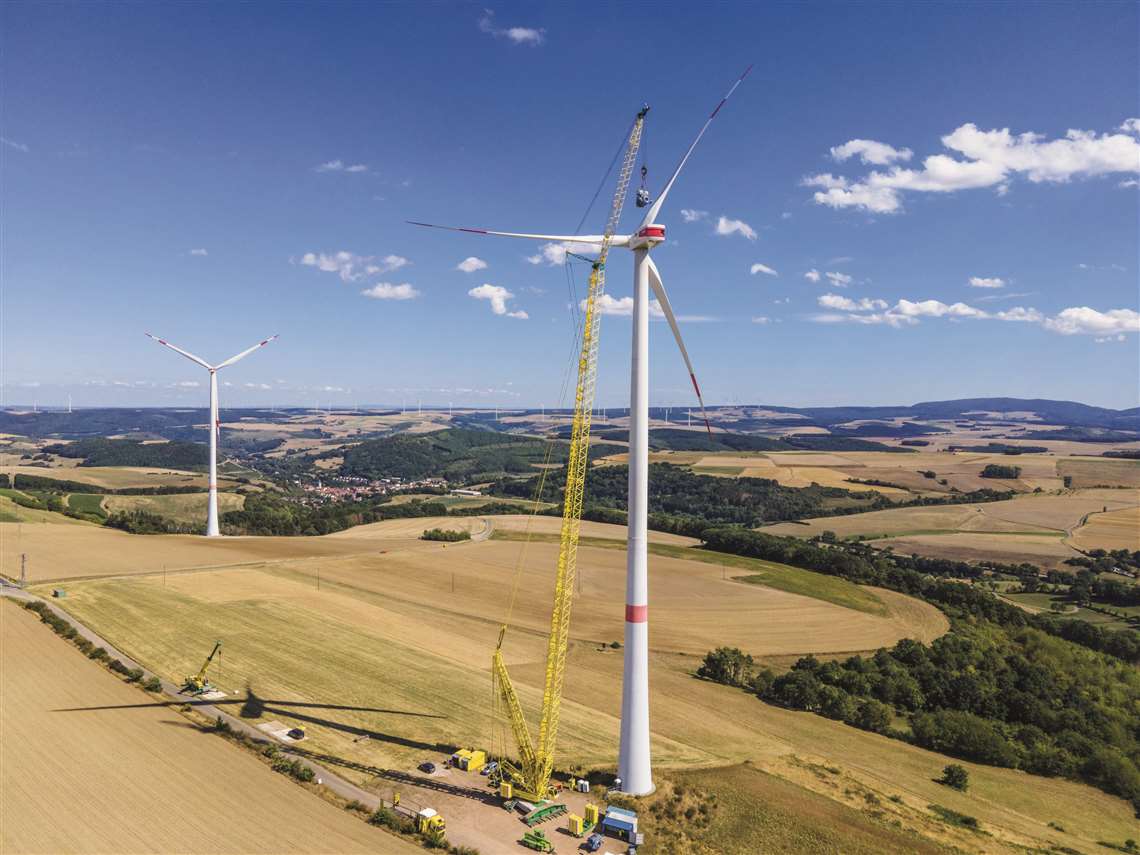 HKV Schmitz has been busy using its Liebherr LR 1500 for wind work
HKV Schmitz has been busy using its Liebherr LR 1500 for wind work
HKV Schmitz is busy using its LR 1500 on wind power jobs. At one recent job it used its SL4DFB system with a derrick and suspended ballast to replace a gearbox weighing 30 tonnes at a hub height of 128 metres. It then switched to using the SL3F, a main boom with a fixed jib, for the next turbine in line.
All terrain cranes are also popular for wind work, especially for turbine maintenance and repowering tasks. Japanese crane manufacturer Tadano says its new Demag AC 450-7 all terrain crane, is well suited for this type of application. The new 450 tonner has an 80 metre boom and a lifting capacity of 37.9 tonnes on its fully telescoped main boom with SSL.
“Depending on the size of wind turbines, the Demag AC 500-8 and AC 700-9 all terrain cranes can also erect turbines,” adds Michael Klein, manager product marketing all terrain cranes at Tadano Demag. “If the turbines are higher, larger all terrain cranes are used to install tower sections.”
With wind turbines increasing in size crane manufacturers are aware that future proofing their products is becoming increasingly important. The increasing size of wind turbine generators sets a challenge for the offshore wind installation industry in particular, says Rotterdam, Netherlands-based startup Tetrahedron. It claims that if jack-up installation vessels owners are unable to increase the lifting height sufficiently on existing installation jack-up ships, these vessels are at risk of becoming unusable within the offshore wind industry by 2023.
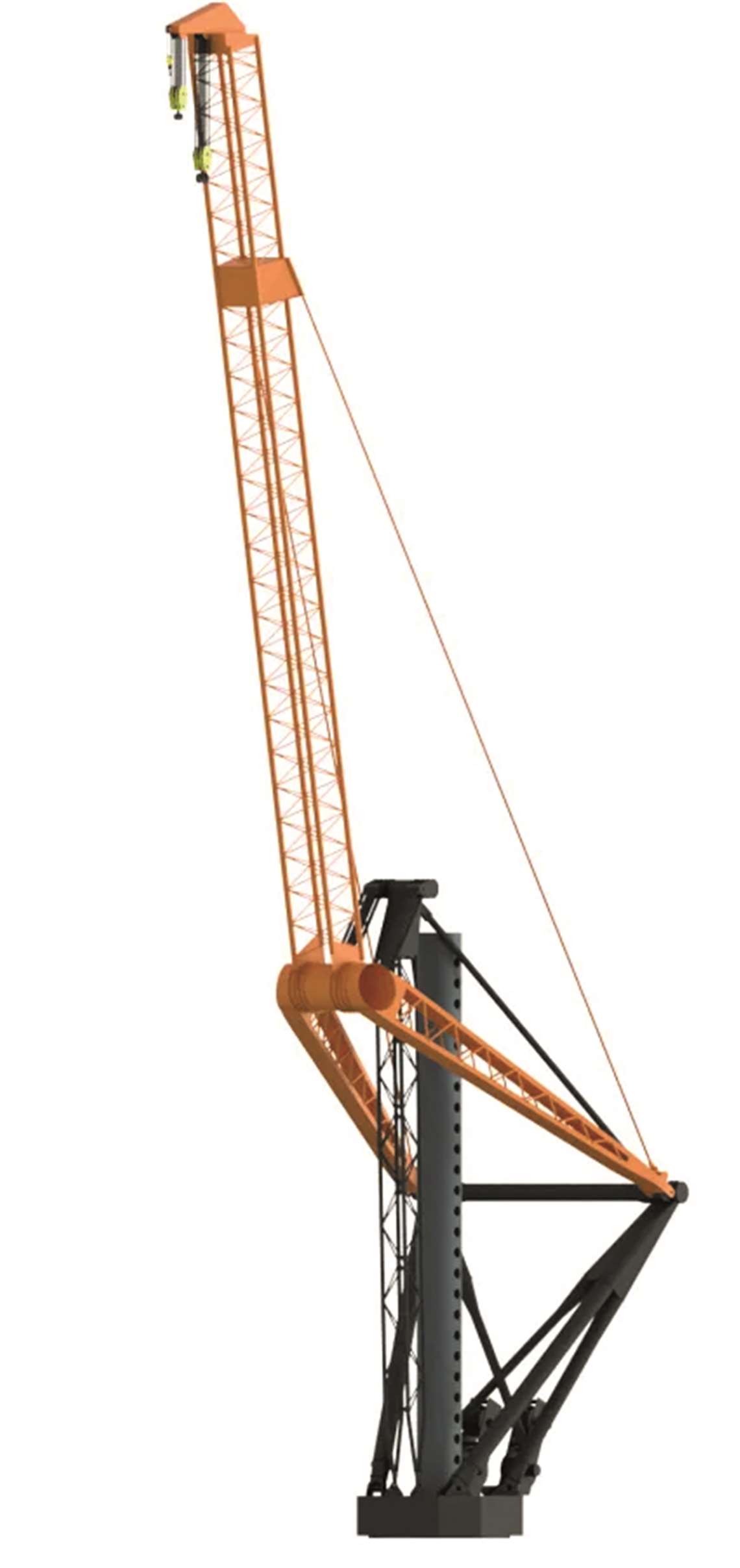 Tetrahedron’s crane is designed to aid jack-up vessels lift the next generation of offshore wind turbines
Tetrahedron’s crane is designed to aid jack-up vessels lift the next generation of offshore wind turbines
Tetrahedron has developed a crane designed to make existing jack-up vessels suitable for installing the next generation of wind turbines at sea, with a design it says is futureproof for turbine developments up to the 20 MW class. The crane can be retrofitted onto existing jack-up vessels, allowing them to compete into the next decade, it says.
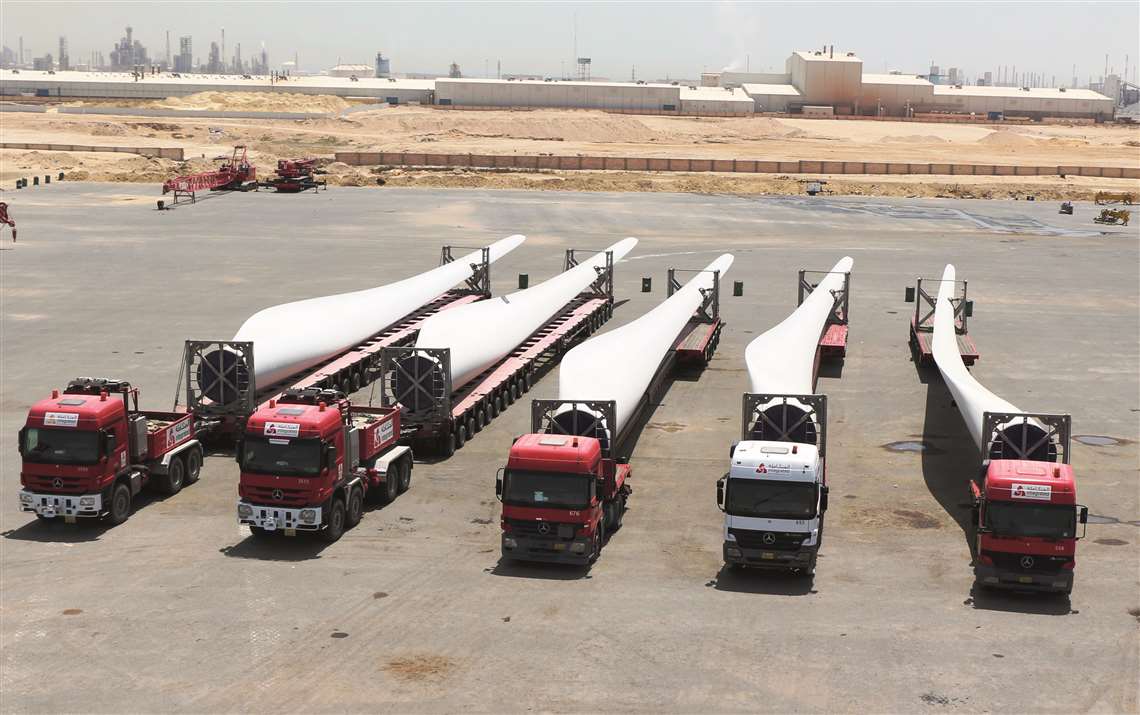
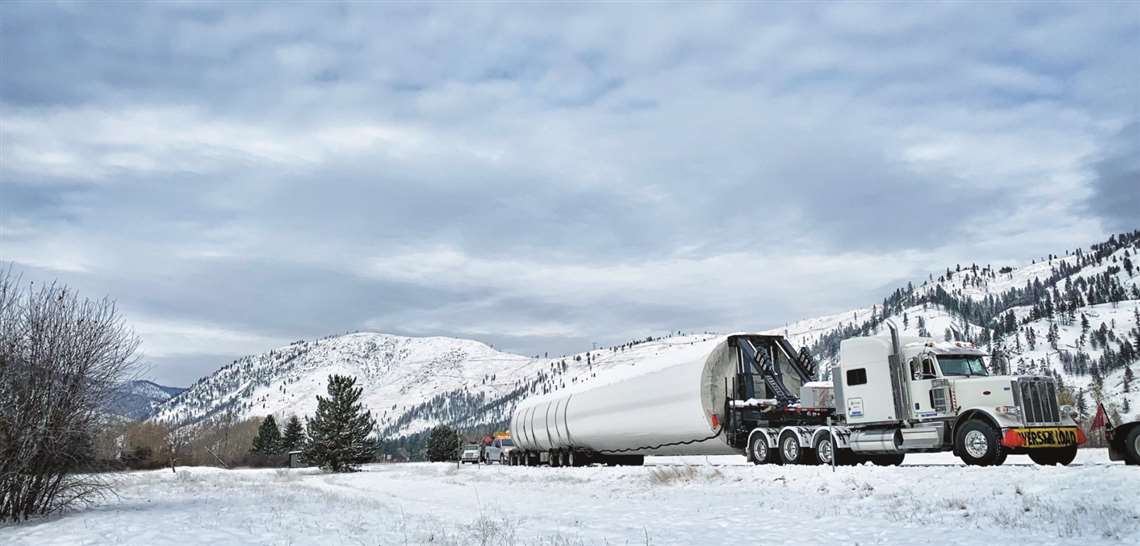
“The project has been running since October; each tower consists of roughly 14 loads,” says Sean Devries, principal and vice president of operations at Pinnacle. “Other than the Siemens product coming out of the sourcing locations in Asia, we were awarded the entire project scope – over a 1,000 loads within a three-month window. Within those loads, we’ll end up transporting the largest blade that Siemens has ever moved in the Americas, and the second-largest blade to move in the Americas to date. The route will also comprise a brand-new transportation corridor for wind components.”
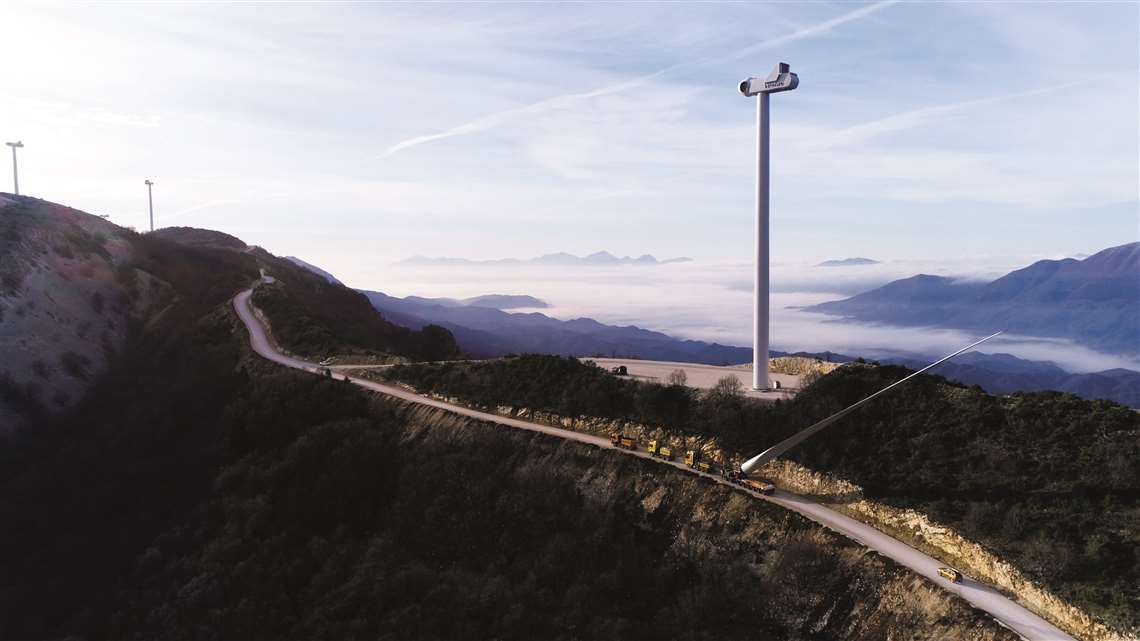
STAY CONNECTED


Receive the information you need when you need it through our world-leading magazines, newsletters and daily briefings.



